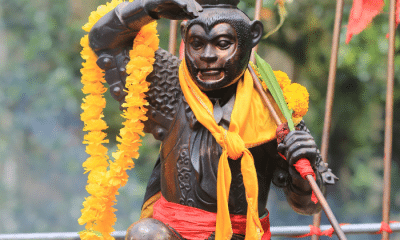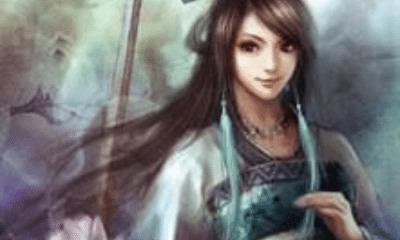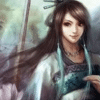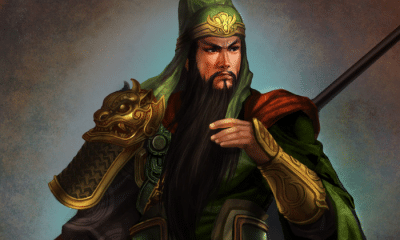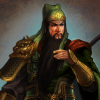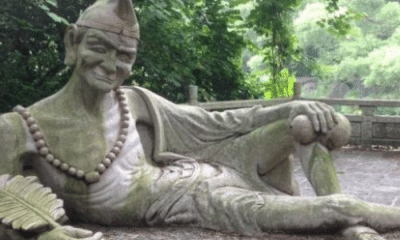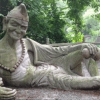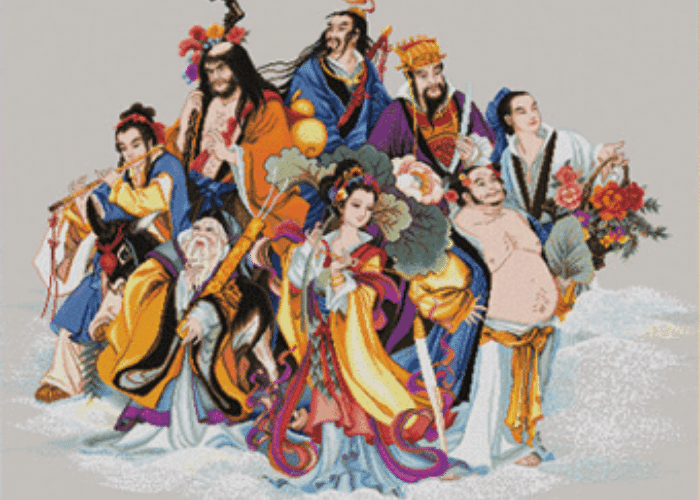
Chinese
Who are China’s Eight Immortals?
Who are China’s Eight Immortals?
The Eight Immortals are a popular group of characters in Chinese art and folklore. But who were these legendary people?
The Eight Immortals are a group of legendary Taoists who are believed to have achieved the highest honors of their faith. Through their study, good works, and inherent virtues they became god-like immortal beings, or xian.
Said to now live on islands in the Bohai Sea, the Eight Immortals are believed to have once been living people. Most were supposedly born during the Tang and Song Dynasties.
The Eight Immortals each had unique paths to immortality and are remembered for different virtues and attributes. It is believed that they can still bestow blessings on people, defeat sources of evil, and even in some cases bring the dead back to life.
The concept of achieving immortality is a central tenet of Taoism. While these eight figures are not the only immortals in the religion, they are honored as representatives of the countless people who have followed the Tao.
The Lives and Powers of the Eight Immortals
Taoists believe that exceptional people can transcend the bonds of mortal life. Following Laozi’s teachings and achieving great things can give a person an unnaturally long lifespan or even make them entirely immortal.
There is no definite list of who and how many people are believed to have become immortal. Some passed into this state without recognition while others are known only in certain areas.
While these immortals typically ascend to a higher plane after becoming divine, they can also return to the mortal world. Some manifest directly, many are reincarnated into a mortal form in times of need, and others serve as intermediaries between the living and the heavens.
Eight of these immortals are recognized throughout most of China. They are often said to live on a distant island but confer certain blessings onto those who revere them.
Lu Dongbin is often said to be the leader of the Eight Immortals. He is mentioned in historical texts as having been a poet of the Tang Dynasty, although he doubtless did not live for over two hundred years as the History of Song claims.
According to legend, he served as a scholar and magistrate before becoming disillusioned with his official position. He left his comfortable life and headed into the mountains.
While cooking a pot of golden millet in a hotel, Lu Dongbin dreamed that he achieved great success at court, even rising to the position of prime minister. His success made others jealous, however, so he lost his position and wealth, his wife betrayed him, and his children were killed by bandits.
Lu Dongbin awoke from the dream, which had appeared to last for eighteen years. He understood the lesson that it was unwise to place too much importance on worldly success and power and chose to study the Tao instead.
He studied under another of the Eight Immortals, Zhongli Quan. Zhongli had sent him the dream to inspire him to learn the Tao and teach others.
Zhongli Quan is said to have been a general and member of the court during the Han Dynasty. During a campaign in Tibet, he met a mysterious old man who taught him alchemy.
Zhongli used his newfound knowledge to help his people, creating gold and silver to lift the people of his home city out of poverty and pay for the food needed to avert a famine. The use of these powers to help others made him an immortal who can also use his magical fan to resurrect the dead.
One of Zhongli’s students was Han Xiangzi. It is unknown whether he was a historical figure, but many believe that he was the grandson of a prominent Confucian scholar and politician of the Tang Dynasty.
Han Xiangzi dedicated himself to Taoism at an early age, to the disappointment of his family who wanted him to enter politics. When he achieved immortality, he helped his family members convert and become immortals as well.
One of Han Xiangzi’s most popular stories involves how he acquired the flute that he is almost always shown with.
According to the legend, he once fell in love with a daughter of the Dragon of the East Sea. Her father locked her away to keep them apart, but she sent him a piece of magical bamboo as a memento.
Han Xiangzi made the bamboo into a flute, making him a patron of musicians and composers.
Zhang Guolao is also said to have been a historical figure who lived in the 7th and 8th centuries. He was a hermit and traveler who claimed to have been several hundred years old.
Zhang Guolao is remembered as a powerful magician, particularly in the field of necromancy. He is also regarded as the most eccentric of the Eight Immortals and is known for his love of wine and the martial art named for him.
While Zhang Guolao is associated with long life another of the Eight Immortals, Li Tieguai, is the patron of medicine and healing. Often depicted as a beggar who walks with a crutch, he is said to be particularly benevolent to the poor and infirm.
According to legend, Cao Guojiu was a member of the imperial family of the Song Dynasty. He had always dedicated himself to the Tao, but after learning of corruption and abuse of power within his family he abandoned his privileged position entirely.
Cao Guojiu was taught magical arts by Zhongli Quan and Lu Dongbin before achieving immortality himself. He is often regarded as a patron of the arts, particularly the theater.
The only female among the Eight Immortals is He Xiangu.
As a teenager, He Xiangu received a dream that instructed her to eat powdered mica to become a divine immortal. She lived a chaste, devout life and became so ethereal that she no longer required food.
He Xiangu was summoned to the imperial court by Wu Xetian but disappeared on her way to court. Several years later, she reappeared and was seen being lifted to heaven by witnesses.
Although He Xiangu is always described as the only female in the group, Lan Caihe’s gender is ambiguous. They are not described as female, but wear feminized clothing.
Lan Caihe was said to have been an itinerant musician, choosing homelessness as a rejection of worldly desires rather than out of necessity. They carry a basket of healing herbs, making them a patron of gardeners and florists.
One story says that Lan, who donated all the money they made from playing music to the poor, used these herbs to heal a beggar. The beggar turned out to be Li Tieguai, who granted Lan immortality in exchange for his selfless act of kindness.
Lan Caihe is also at the center of the most often-depicted story involving the Eight Immortals.
According to a 14th century tale, the Eight Immortals decided to test themselves by traveling across the sea without riding on clouds as they usually did. Each chose one of their personal emblems to ride across the waves.
Lan rode on the jade clappers he had used as an instrument when he was mortal. The Dragon King envied the clappers, so he imprisoned Lan Caihe and stole them.
The other seven Immortals waged war against the dragons to free Lan. Eventually, they threw a mountain into the sea that killed many dragon lords and destroyed their underwater palaces.
Lan Caihe was rescued but, in an act of mercy, the Dragon King was allowed to keep the clappers in payment for the many dragons who were killed.
My Modern Interpretation
Taoists believe that any person can achieve immortality through devotion and good works.
This means that there can never be a complete list of men and women who have become immortal. Many of the immortals lived as hermits and outcasts, so their longevity went unnoticed.
While many immortals are recognized, even they are thought to represent only a handful of Taoism’s greatest followers.
The Eight Immortals are used to, in a sense, stand in for the countless unnamed and unknown immortals that may have existed.
While specific immortals may not always be known, their virtues can be represented through the Eight Immortals. The legends that surround these characters stand in for the individual stories of other anonymous Taoists.
These legendary figures represent many ways that different types of people could attain immortality. While some, like Han Xiangzi, studied the teaching of Laozi their entire lives, others were granted immortality for their good works or, in the case of He Xiangu, because of virtue.
The Eight Immortals provided a blueprint for those who wished to follow the Tao as they did. Whether they were a member of the royal family, a scholar, or a beggar, they could look to the Eight Immortals for inspiration.
Today, most people do not see the Eight Immortals as historical figures. Their stories are recognized to be legends rather than literal accounts of the past.
Still, the Eight Immortals provide inspiration to Taoists. Even if many people no longer believe in them as literal historical figures, their stories show how adherence to Taoist principles, particularly in the face of great trials or temptations, can be rewarding.
In Summary
The Eight Immortals are a group of well-known figures in Taoism and Chinese folklore. All were once believed to have been historical figures who earned renown by following the teachings of Laozi.
Most of these immortals were believed to have been born during the time of the Song and Tang Dynasties. Today, however, most people recognize that their lives are the subjects of legends rather than historical fact.
The Eight Immortals not only gained endless life through their devotion to the Tao, they also had a variety of gifts. They could defeat evil, work magic, and give blessings of health and longevity to their devotees.
Because immortality is a core belief of Taoism, far more than eight individuals are believed to have reached this state. There is no definite number, however, both because of regionalized beliefs and because so many Taoists lived as hermits and travelers so they went unnoticed.
The Eight Immortals can be seen as representatives of all these anonymous figures. Coming from a variety of backgrounds and overcoming different obstacles, they collectively show many ways in which Taoism can be applied in life.
Even if the Eight Immortals are no longer widely believed to have been actual figures from the past, they continue to inspire and entertain Chinese Taoists.


